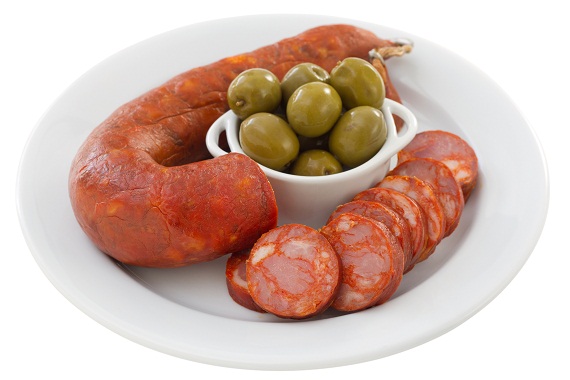Want to learn how to cook traditional Portuguese sausages? Want to know the difference between Linguia and Chouro sausages? Read our guide for more information…
Portuguese cured pork sausage, known in Portuguese an Linguica, is seasoned with garlic and paprika. Beyond Portugal and Brazil, linguiça can also be well-liked in Goa, Southeastern Massachusetts, California, Rhode Island, Hawaii, and Okinawa, where it is sometimes simply referred to as Portuguese sausage. It’s typically chopped up prior to being braised or even barbequed. Throughout Hawaii, McDonald’s eateries serve breakfasts offering Portuguese sausage, a local version of their normal menu. Linguiça, just like a number of other sausages, is normally dished up during a heavy dinner, commonly coupled with rice, beans, as well as other pork items. Feijoada, for instance, is actually a classic Brazilian food, also popular in Portugal, that features linguiça with beans, ham hocks, along with other food items. Linguiça can also be employed in Francesinha, a conventional Portuguese dish, from Porto. It can also be included in its sauce, giving it a unique flavor.
Portuguese sausage is filled, cured by smoking, comprising meat and hard fats-free rind, pork Alentejo Breed, added salt, crushed dried garlic, paprika, chili garden mass and sometimes white wine. The shell casing is thin, dry, natural beef, goat, sheep or pig. It is filled into a horseshoe-shape and individualized by tight bandage or twisting the ends, with length as much as 50 cm. The Portuguese sausage has a diameter not exceeding 28 mm. In oblique section presents quite solid mass of marbled appearance having a regular distribution of meat and fat, white and red. Excellent flavor, smooth or delicate, slightly salty. The use of geographical indication requires that the sausage is obtained in accordance with the procedures contained in the specifications, which includes in particular the conditions for creation of pork Alentejo Breed in extensive or semi-extensive, their conditions of slaughtering and cutting, as well as the marking and packaging.
Portuguese Chouriço Sausage
Portuguese chouriço is made with pork, fat, wine, paprika and salt. It is then stuffed into natural or artificial casings and slowly dried over smoke. There are many different varieties, changing in color, shape, seasoning and taste. Many dishes of Portuguese cuisine and Brazilian cuisine make use of chouriço – Cozido à portuguesa and Feijoada are just two of them.
A popular way to prepare chouriço is partially sliced and flame cooked over alcohol at the table. Special glazed earthenware dishes with a lattice top are used for this purpose. In Portugal there is also a blood chouriço (chouriço de sangue) very similar to the Black Pudding, amongst many other types of Enchidos, such as Alheira, Linguiça, Morcela, Farinheira, Chouriço de Vinho, Chouriço de ossos, Cacholeira, Paia, Paio, Paiola, Paiote, Salpicão and Tripa enfarinhada.





